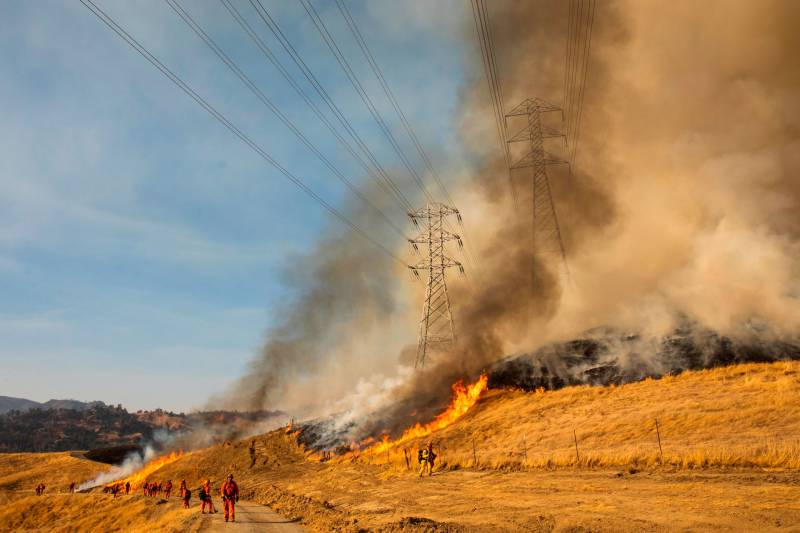Alsup was also severely critical of PG&E in his assessment of the company's past transmission line maintenance and inspections. He recounted the company's failure to detect the damaged transmission tower hardware that led to the Camp Fire and several other instances in which inspectors didn't see or neglected to take note of equipment that was later found to be badly worn.
The judge expressed frustration that PG&E reported three separate inspections of a Sonoma County transmission tower where a cable broke during a windstorm last October and apparently started the Kincade Fire.
"Like a broken record, PG&E routinely excuses itself by insisting that all towers had been inspected and any noted faults were addressed, at least according to its paperwork," Alsup wrote. "But these transmission tower inspections failed to spot dangerous conditions. Was this because the inspections were poorly designed or was it because they were poorly executed? Had someone falsified inspection reports? It is hard to get a straight answer from PG&E. The offender is masterful at falling back on the inspection reports and saying, 'See, Judge, we had that very line inspected and all was well,' or, 'We fixed whatever they found wrong. We did our part.' The reports, however, are a mere courtroom prop."
To deal with those shortcomings and hold both individual inspectors and the company responsible for their findings, Alsup ordered three new conditions of probation.
PG&E has to catalog the age and condition of every piece of hardware on every transmission tower and line in its system. The company must also devise a new system to assess the condition of towers, lines and associated equipment and will be required to take a video of every inspection. Finally, contract inspectors will be required to carry enough insurance "to cover losses suffered by the public should their inspections be deficient and thereby start a wildfire."
Alsup gave PG&E until May 28 to present a plan to hire new vegetation management inspectors and a blueprint for the new transmission inspection protocols.
PG&E is aware of the court's order and is currently reviewing it, according to James Noonan, a spokesman for the utility.
"We share the court's focus on safety and recognize that we must take a leading role in working to prevent catastrophic wildfires. We remain focused on preparing for the wildfire season ahead, while continuing to deliver safe, clean and reliable energy to our customers," Noonan said in an emailed statement.
The judge's order included a strong endorsement for public safety power shutoffs — preemptive blackouts that left millions of people in PG&E's service area in the dark during prolonged periods of high winds and low humidity. Alsup remarked that the utility's post-shutoff inspections disclosed hundreds of locations where limbs and trees fell onto de-energized power lines and likely would have sparked wildfires.
"Those fallen limbs and trees remain proof positive that the PSPS program saved lives and homes," Alsup wrote. "Shutting off the power in those lines in advance of the windstorms was essential to public safety, and PG&E did so. For this PG&E deserves credit. But at the same time, those hundreds of fallen limbs and trees also remain proof positive of how unsafe PG&E had allowed its maintenance backlog to become."

